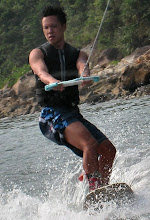Anyways, I don't want to go into some long-winded rant about existentialism so let's focus on the fun stuff. The human brain works in such a funny way. What it sees isn't actually what the eyes are capturing. The eyes merely send signals to the brain to interpret; what finally comes out of that processor can be totally unpredictable. For example, take a look at these common optical illusions.
Facebook users will probably recognize this animated GIF. Because of the lack of reference points, this dancer can actually be perceived as rotating in either direction (clockwise and counter-clockwise). Most people only see her spin in one direction. The first time I looked at this I could only see her spinning CCW, but now I'm able to see both.

Here's a breakdown of the movement if you want to freeze the motion. Or, you can try blocking the top part of the picture and only look a the 2 legs. It's a lot easier to see the movement in both directions this way.

This is the Adelson's Checker Shadow Illusion. Squares A and B look like different shades of gray, right?
 But connect them with the same colored bar and you can see that they're actually the same color.
But connect them with the same colored bar and you can see that they're actually the same color. 
The Cornsweet Illusion: One side looks darker than the other right?
 But cover the middle with a black bar and voila! Both are actually the same color.
But cover the middle with a black bar and voila! Both are actually the same color. These 2 pictures illustrate Anomalous Motion and Peripheral Drift. Notice that thes are JPEGs not GIFs so they aren't animated. The movement you see is caused by your brain's interpretation of the patterns (click on them to see the full sized versions).
These 2 pictures illustrate Anomalous Motion and Peripheral Drift. Notice that thes are JPEGs not GIFs so they aren't animated. The movement you see is caused by your brain's interpretation of the patterns (click on them to see the full sized versions).

The horizontal lines look crooked, but they're not. This is the Cafe Wall Illusion.
 The Chubb Illusion: both circles are actually identical
The Chubb Illusion: both circles are actually identical
The Ebbinghaus Illusion: the two orange circles are actually the same size, but because of their relative size difference with their surrounding circles, the left orange circle looks smaller.
 Simultaneous Contrast: Both of the central rectangles are the same size and color, but because of the different colored background, your mind perceives them to be different.
Simultaneous Contrast: Both of the central rectangles are the same size and color, but because of the different colored background, your mind perceives them to be different. The Jastrow Illusion: Figures A and B are actually the same size and shape, although A looks smaller:
The Jastrow Illusion: Figures A and B are actually the same size and shape, although A looks smaller:
This one's really cool. You think you're looking at a spiral, but it's actually a series co-centric circles. Just try tracing a line with your pointer and you'll see that it forms a circle, not a spiral. The Fraser Spiral Illusion:
 The Kanizsa Triangle: Do you see a white triangle in the center? This is actually a diagram of 3 V-shapes and 3 pie-shapes, but the mind needs to recognize a pattern so it fills in the empty space by forming the more recognizable shape of a triangle:
The Kanizsa Triangle: Do you see a white triangle in the center? This is actually a diagram of 3 V-shapes and 3 pie-shapes, but the mind needs to recognize a pattern so it fills in the empty space by forming the more recognizable shape of a triangle:
Lilac Chaser. You'll need to click to see the larger version. Just stare at the cross in the center (try not to blink). The pattern doesn't change but eventually you'll see the image change from a blank space moving between the circles into a single green circle moving in around with all the pink circles gone. Try blinking and you'll break the illusion.

The Muller Lyler Illusion. Look at the first 3 lines. Which is longer? In fact, they're all the same length.

The Poggendorff Illusion: Looks like the the blue line connects to the black one, right? Look again!

The Ponzo Illusion: the sense of perspective makes the yellow lines look different, but they'are actually the same size.

Lastly, my favorite MC Escher picture: Ascending and Descending. I prefer it's subtlty over the more famous "Waterfall" (below); a casual viewer probably wouldn't notice anything wrong with this image.




